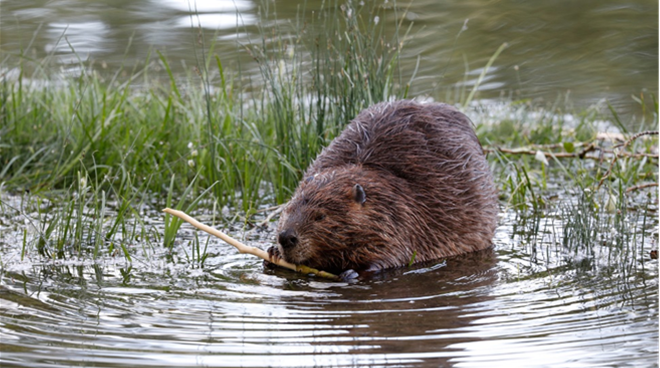Castor canadensis

Known as “nature’s engineers” because they are ever busy building and changing the land and water around them, the American Beaver is a familiar animal to most people in North America, recognizable by its distinctive flat tail.
Habitat
American Beavers need water. Look for them in lakes, rivers, and existing wetlands, with trees nearby.
You can find American Beavers at Oak Hammock Marsh!
Food
Beavers chew through trees to knock them down, but they don’t eat wood. They eat the leaves, inner bark, and twigs. They’ll also eat grasses, small shrubs, and water plants. …
Behaviour
Large, self-sharpening teeth help them chew down trees, which are then piled with mud from underwater to make a lodge. By design, lodges have underwater entrances to keep out predators. If the water in a place is not deep enough, beavers will also build a dam to make it deeper. In the process, they create
wetlands that benefit not only themselves, but other animals and plants too.
Beavers can live up to 16 years in the wild. Mating for life, they will have 2 to 4 young each year, called kits, who will stay with their parents for almost two years before moving on.
Most at home in the water, beavers have webbed back feet, noses and ears that plug themselves, clear goggle-like eyelids, oily, two-layer fur to stay dry, and claws to help them climb up the banks and hold branches. Even their lips are shaped for underwater chewing. If they sense danger, they’ll slap their tail loudly on the water. Before winter they will pile branches to eat in the water before the ice forms, known as a cache.
Conservation
Today the American Beaver is plentiful, recovering from historic lows and near extinction during the fur trade era. While trapping of beavers still occurs for fur and management, it is highly regulated.

